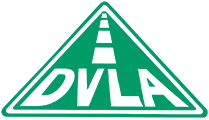Mon, 09 Sep 2019 15:49:00
 Although it may not feel that long ago, smart motorways have been popping up around the UK since they were first introduced on the M42 in 2006. In those 13 years, more than 400 miles of road have been converted to the new active traffic management system (ATM), but many motorists are yet to fully understand how they work, and what implications could occur if they aren’t used properly. So, with that being said – what are smart motorways and how do they work? Smart Motorways – How Do They Work?Currently, there are three different types of smart motorways in the UK. All have been designed to manage traffic and increase capacity while reducing overall congestion at particularly busy areas or times in the day. The three smart motorways include: All Lane Running SchemesAs the name indicates, an all lane running scheme permanently converts the hard shoulder into a running traffic lane. On this smart motorway, lane one which was formerly a hard shoulder in only every closed off if an incident has occurred.The extensive use of CCTV helps monitor what is occurring on, and in the event of an incident, a red X will appear above the lane on the gantry signalling lane closure to motorists. All lane running schemes also display mandatory speed limits, which will automatically adjust depending on traffic conditions. If no speed limit is present on the gantry, the national speed limit is in place. Designated emergency refuge areas (ERAs) are available should drivers break down or be involved in an incident on the side of the carriageway. Controlled MotorwayControlled motorways work similarly to the All Lane Running Scheme with the main difference being that the hard shoulder always remains as an emergency-only lane. The hard shoulder should only ever be used in a genuine emergency.Variable speed limits are still signalled on the gantry to help aid congestion during busy times; however, when a speed limit is not present the national speed limit is enforced. Dynamic Hard Shoulder Running Schemes Dynamic hard shoulder running schemes are commonly seen all over the country. They work by only turning the hard shoulder into a running lane of traffic at busy periods to help ease congestion. On these stretches of the motorway, a solid white line differentiates that hard shoulder from the normal carriageway. In the event of an emergency, a red X will appear above the lane on the gantry. It is critically important that motorists exit the lane safely as soon as possible. Ignoring the red X is extremely dangerous and could put both your life and others at risk. Smart Motorway FinesJust like all roads, there are rules and laws in place to keep motorists safe. However, there are a few things you need to bear in mind while travelling on a smart motorway.Speeding Drivers often assume that the speed cameras on a smart motorway are only enforced when the variable speed limit is in place. However, the cameras on smart motorways are always active, monitoring traffic and speed. Therefore this means that any motorists travelling over the national speed limit have a much greater chance of being fined for speeding. Red X Fines As we touched upon previously, driving within a lane with a red x signalled above is extremely dangerous. Currently, manual enforcement is in place for drivers that are seen driving within a ‘Red X’ land. However, Highways England is looking to implement camera enforcement, which will lead to points on your licence and a fine. Smart Motorways In A Nutshell· Never drive in a lane closed by a red “X”.· Keep to the speed limits shown on the gantries · A solid white line indicates the hard shoulder – do not drive in this lane unless directed on the gantry. · A broken white line indicates a normal running lane. · Use the refuge areas for emergencies if a hard shoulder is not present. |


